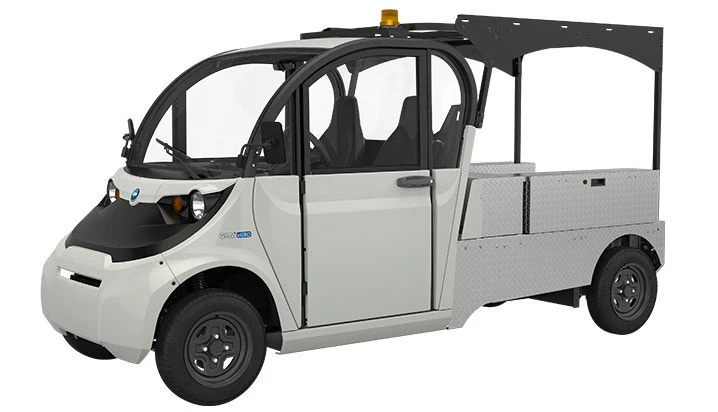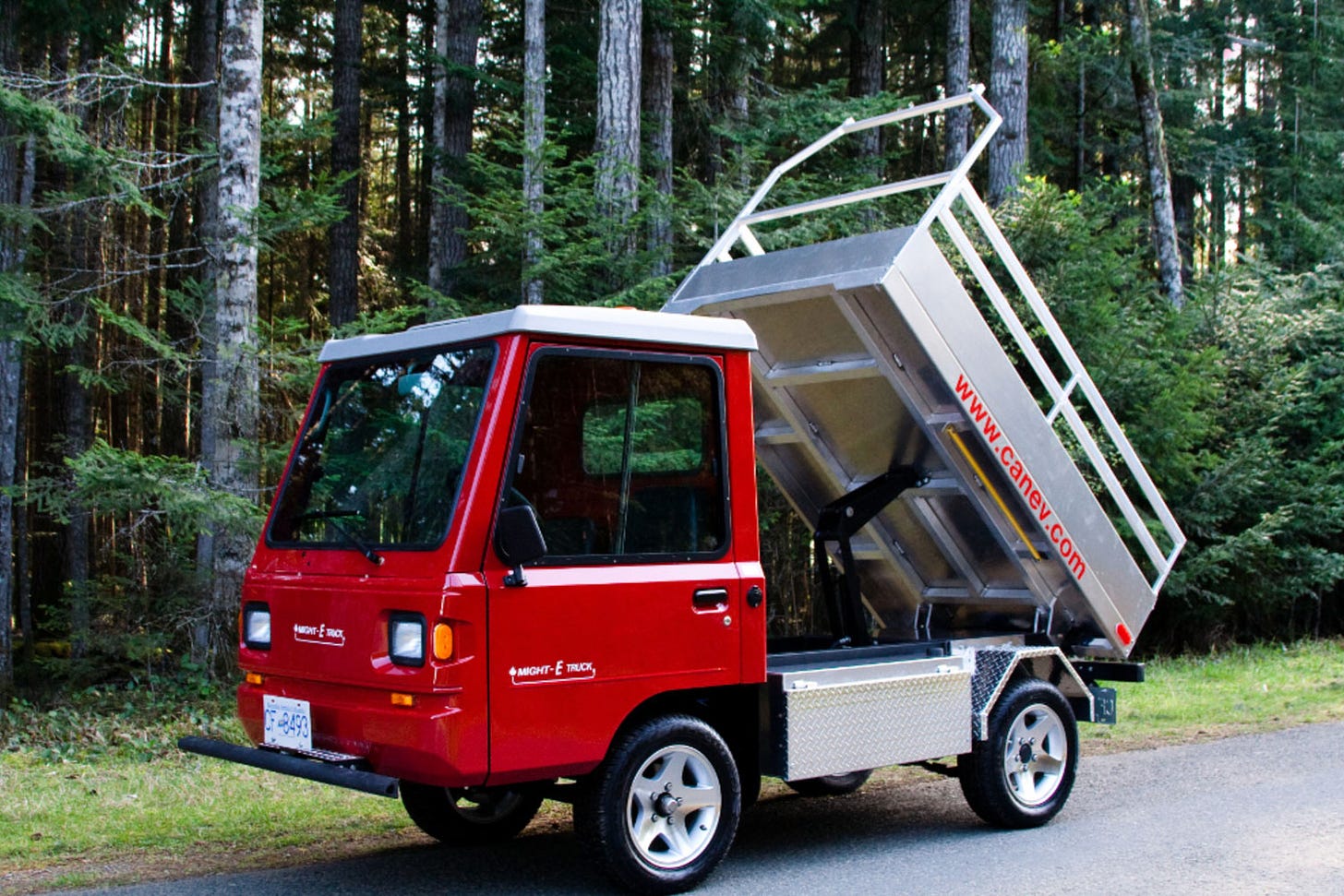The Rise of the Small Commercial Electric Vehicle
Can borrowing social media tactics and low-cost engineering from China and India help spur the adoption of low-cost commercial EVs in North America?

Opportunity Overview
Commercial vehicles (“CVs”), which include delivery vans, utility pickups and police cars, are a key pillar of the US economy. Business and government fleets operate about 8 million Class 1 to 5 vehicles, which does not include another 3 million used by “non-fleet” customers (e.g. self-employed tradesmen). Recently, a wave of electrification has caught the CV segment, which brings clear benefits to both customers and decarbonization.
However, this article is about another potential shift that could take place within the industry. There is something budding that I am interested in given the unusual way it could deliver similar customer and decarbonization benefits. Countries outside the US, including China and India, have a history of using smaller and lower-cost EVs for commercial purposes, such as three-wheeled rickshaws.
Hence, I wonder, could innovative new startups lead the way for a micromobility movement in the US CV market?
Current Landscape
In the US, the use of small commercial EVs is not new. “Low-speed electric vehicles” (LSEVs) have been around for decades. In fact, the Detroit Big Three even experimented with this small form factor in the early 2000’s. Today, companies like GEM and Club Car have built businesses focused on utility work, serving customers such as campuses, parks, resorts and municipalities.

Despite their long history, LSEVs today have only found relatively narrow use cases. This could be partly due to their costs (compared to a sedan, for example) and to only being street-legal on roads 35 mph or less. However, there are two ongoing developments that make me wonder if LSEVs could start capturing more of the CV market.
First, the new product releases and pilots to test them have just been steadily ongoing:
🇺🇸 Club Car launched a new electric truck “to fill the gap between full-sized trucks and small utility vehicles”.
🇺🇸 AYRO released a LSEV designed for vaccine delivery in the US, outfitted with “ultra-low temperature freezer and refrigeration units”.
🇨🇦 CanEV received government funding to continue the development of the low-speed “Might-E-Truck”.
🇨🇦 Purolator, Canada’s largest courier network, is testing LSEVs in two cities.
🇺🇸 Note that LSEV pilots are not new. The USPS tested LSEVs over a decade ago.

To me, the more intriguing development is the emergence of mass-scaled, low-cost commercial EVs, often priced at steep discounts relative to North American models. Consider that:
🇨🇳 Passenger LSEVs in China retail for between $5,000 to $10,000, with one model advertised at $1,200.
🇨🇳 A European version of a successful Chinese low-cost EV will be available for sale later this year, with plans to offer services that enable “delivery services and tourism”.
🇨🇳 There is already a low-speed electric truck called Pickman that is available in the US for $10,000.
🇮🇳 Mahindra will provide Amazon India 10,000 units of its three-wheeled EV, reported to be priced around $4,000.
🇮🇳 Tata Motors might roll out an electric version of its small commercial truck, the ICE version of which I estimate to be around $7,000.
Customer Value and Carbon Benefits
I think low-cost commercial EVs offer an interesting proposition, because if it gets the job done at the lowest cost, then why not? If a CV customer can purchase one of these at under $10,000, then I would assume that the total cost of ownership (TCO) benefits over a larger vehicle (ICE or EV, used or new) would be significant. To conduct this analysis properly, one would need to normalize for the expected life of the vehicle, i.e. how many miles the low-cost EV can take before you need to replace it. Moreover, while LSEVs do not qualify for the $7,500 federal EV tax credit, some state incentives might apply to bring costs even lower.
If the TCO is low enough, then I imagine some businesses will find ways to integrate these LSEVs into their fleets that address their limitations. For instance, one could operate a mixed fleet of electric vans and LSEVs, using LSEVs for inner roads and vans for highways (where LSEVs are not allowed). Smaller vehicles also have the added advantage of being easier to maneuver and park in tight urban areas.
From a decarbonization perspective, the key question to ask is: what miles are the LSEVs replacing? Compared to a larger ICE vehicle, then the CO2 reduction potential of a smaller EV is clear. Even when compared against a larger EV, smaller vehicles intuitively will emit less CO2 given their higher efficiency and less material use. More importantly, because small businesses often start out with used (often ICE) vehicles for lower costs, a cheaply priced EV alternative might accelerate the turnover of ICE vehicles to EVs for the commercial segment.
To fully understand the climate benefits, one has to conduct a life-cycle assessment that accounts for different factors (e.g. electricity grid mix, CO2 in making and operating the vehicles, expected life, etc.). That said, my hypothesis is that the climate advantage of low-cost smaller EVs are clear. Moreover, smaller vehicles have another equally important societal benefit compared to larger ones: safety.
Potential Market Opportunities
How might an enterprising entrepreneur get involved? Two obstacles to a wider-scale adoption of low-cost commercial EVs are awareness and friction. First, most small business CV buyers might not be aware of them. Simply put, they are not in the buyer’s choice set. Hence, driving more awareness could lead to higher adoption.
More importantly, I imagine there is still a lot of friction for a customer looking to buy these vehicles. For instance, some customer concerns when buying a low-cost EV from a non-US OEM might include:
While it is possible today to purchase one-offs, how does one make a fleet-sized order and import them into the country?
What about any certifications or approvals required to legally use these vehicles on public roads?
Who will repair these vehicles to guarantee minimum downtime given how critical reliability is to CV customers?
Finally, I wonder if borrowing from the playbook of Hongguang Mini, the Chinese low-cost EV maker that is outselling Tesla in China, can help spur adoption? The company is hyper-focused on the customer, using social media to communicate directly with their buyers and understand their needs. For instance, customers are able to customize their cars to their liking.
I can imagine building a solution that leverages the low-cost commercial EVs with a Hongguang Mini-like customization capability:

Imagine if a customer can go online, and with a few clicks customize their own low-cost EV? And then pay for it with a credit card? How many used ICE shoppers might just switch over? How many would-be entrepreneurs might just launch their next thing? This might be an existing gap in the market today to address the awareness and friction above, where if addressed, could also accelerate their decarbonization benefits.
Interested in topics like these? Subscribe now and share with your friends!



